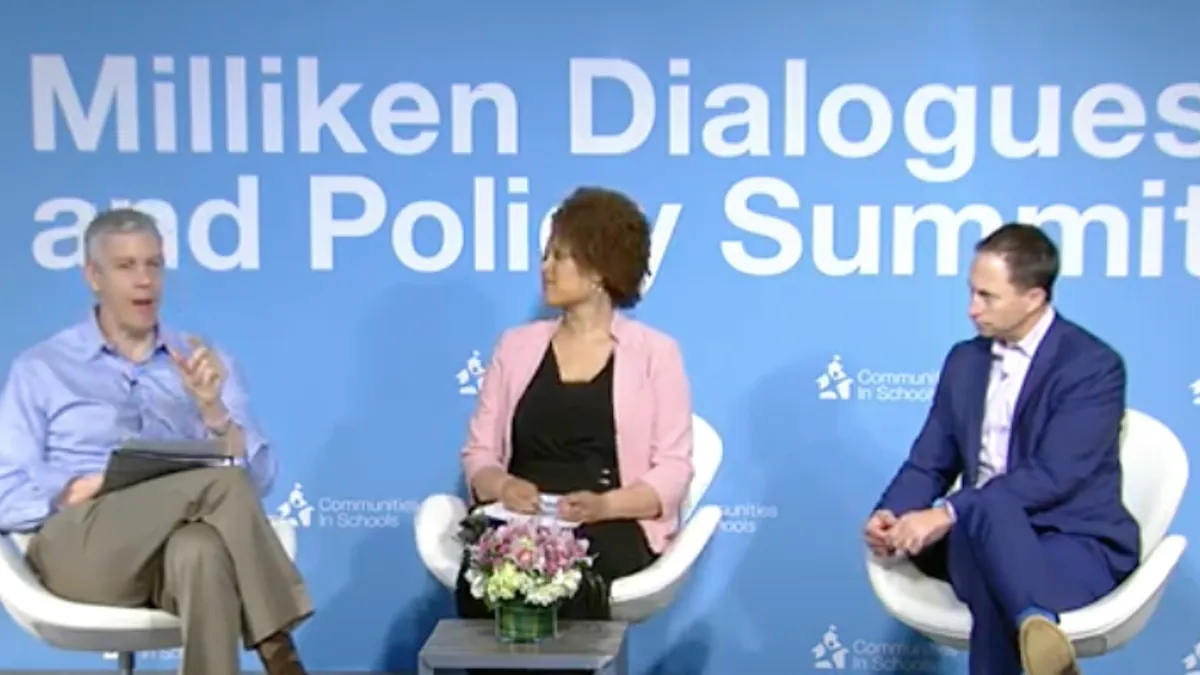Americans are split on whether they think educators have the skills to handle discipline issues in the classroom, according to new Gallup data released Wednesday.
While 54% responded that teachers are unprepared or very unprepared to respond to students’ behavior problems, 43% said that teachers are either prepared or very prepared. A large majority of respondents — 89% — also agreed that increasing access to mental health services in schools would be effective or very effective at improving discipline.
They were least in favor of schools implementing stricter disciplinary practices — such as more detention, suspensions or expulsions — with 24% saying these approaches would be very effective, while 43% said they would be not very effective or not effective at all.
When teachers don’t have the training to keep order in classrooms, parents are most concerned about their children’s safety (30%), followed by learning being disrupted (21%), the results show.
“Safety was an extreme concern among those that we interviewed,” Stephanie Marken, executive director of education research at Gallup, said during a Communities in Schools (CIS) discussion on school discipline as part of a Milliken Dialogues and Policy Summit. CIS is a nonprofit organization working in 2,500 schools to bring together community resources that can prevent students from falling behind and dropping out.
Debating the federal role in ensuring that discipline policies don’t violate students’ civil rights, former U.S. Education Secretary Arne Duncan and Michael Petrilli, president at the Thomas B. Fordham Institute, revisited the now-rescinded Obama administration’s guidance on school discipline.
Petrilli called the 2014 guidance — which aimed to reduce racial disparities in suspension and expulsions — “awfully close to a mandate” and said the question now is how to learn from examples where discipline reform, such as using restorative practices, is going well.
In Fordham’s own surveys, he said, principals tend to report that these programs are effective while “teachers are saying help.” Keeping disruptive students in class or school, he added, can “have a very negative impact” on classroom peers.
He also suggested that changes in discipline policies should be connected to larger efforts to “turn around” low-performing schools serving students of color and those from families in poverty.
Duncan recalled his efforts while serving as superintendent of the Chicago Public Schools (CPS) to reduce the number of students being arrested only to learn that principals were the ones frequently calling the police. “We met the enemy and it was us,” he said, adding that racial disparities in school discipline begin in the early years. “I’m hard pressed to understand why any of us would ever suspend and expel a 3- or 4-year-old.”
The former secretary disagreed that the federal government should leave discipline policies completely up to local districts. “I just think we have to understand our history,” he said. “Slavery didn’t end bottom up. Jim Crow didn’t end bottom up. Title IX didn’t happen bottom up.”
Teachers calling for ongoing support
The event was also held a day after the Learning Policy Institute (LPI) released a report criticizing the Trump administration’s decision to withdraw the guidance.
“The administration took this action despite a substantial body of research showing that zero-tolerance policies and exclusionary discipline practices for nonviolent behavior are largely ineffective in changing student behavior or creating safe learning environments,” the report says.
The report highlights efforts in states to eliminate suspensions in the early grades and for minor infractions, and notes recent federal data showing that incidents of violence, theft and other crime occurring at school have declined.
“While some states and districts are implementing evidence-based approaches, those efforts are far from universal,” the authors write.
The CIS event also included a discussion of policies and strategies, such as those included in CIS’s new Community Matters report. They include CIS coordinators holding morning check-ins or circle discussions that involve conversations about discipline and social-emotional issues, and leadership development groups for girls who were having behavior issues such as bullying.
But a CPS teacher speaking on a panel suggested that educators often don’t have enough guidance and support when it comes to alternatives to suspension.
“So often policies are created but the implementation and support to enforce that policy is lacking. It’s good to give us a policy, don’t get me wrong, to say ‘Let’s eliminate zero tolerance,’ but what are you doing to effectively help us teachers?” said La’Tia Taylor, adding that “giving us one [professional development] and saying, ‘Hey you’re the expert at doing peace circles’” is not the same as providing ongoing, consistent support.
The report also recommends that states and districts not only report student discipline and behavior data disaggregated by subgroup, but that they also regularly analyze that data. The authors also recommend that policymakers define “essential practices” for integrating supportive programs into schools, provide access to trauma recovery resources, and assess students’ non-academic needs when developing improvement plans for low-performing schools.
The LPI report also includes recommendations, such as including not just educators in training on implicit bias and “asset-based youth development,” but also school resource officers, police, juvenile court judges and others who work with students. Schools also need clear policies on the cases and situations in which educators are responsible for discipline and when law enforcement should be involved. The authors also say that school leaders should consider how to reduce any negative consequences of having law enforcement officers in schools.
“While it is important to protect staff and students from physical violence,” the report says, “the regular presence of untrained law enforcement officers in schools can sometimes cause disproportionate harm to students of color and other historically underserved students.”





















